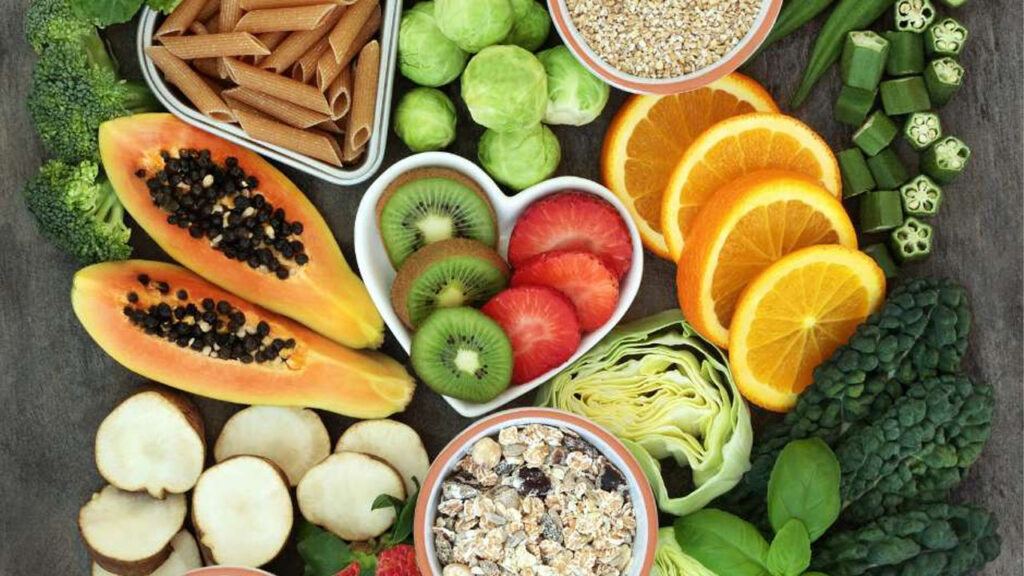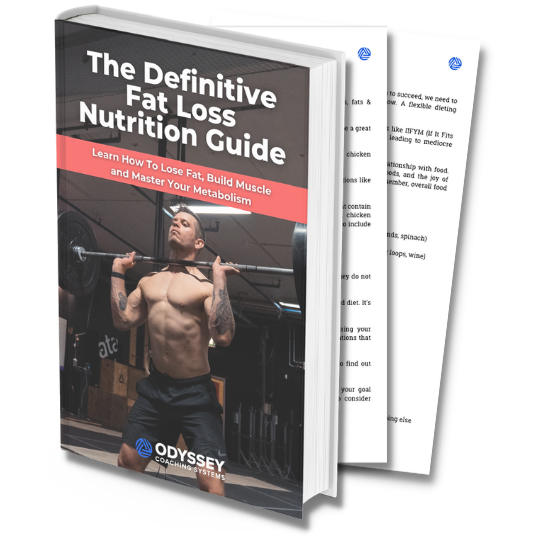Main Take-Aways
1. Although it is a type of carbohydrate, fiber does not really get broken down and used by the body for energy. Instead it travels through your digestive tract, where it ferments and feeds your friendly gut bacteria and helps keep things moving.
2. What seems to be enough for most people seems to be around 25g for adult women and around 38g for adult men (8). However you may be better off basing your fiber intake on daily caloric intake, 14g of total fiber per 1,000 calories to be more specific.
3. Research shows that a higher fiber intake is linked to a reduced risk of all-cause mortality, improvements in blood sugar levels, body weight, blood pressure, cholesterol levels, gut health, mental health, and much more.
One of the best ways to improve your health is by adding more fiber to your diet.
While fiber isn’t a macronutrient and doesn’t get as much attention as protein, carbohydrate, and fats, it should not be neglected.
From improving your digestion and helping you poop, to feeling fuller, to literally lowering the risk of death by all causes.. Fiber comes with tons of benefits.
Sadly, a lot of people don’t eat enough fiber. And even worse, you’ll find people on social media who claim that fruits and vegetables are bad for you!
In this article, we’ll break down what fiber is, why it’s important, and how you can effortlessly increase your fiber intake to live a healthier and longer life.
What Is Fiber?
Fiber is a type of carbohydrate that you mostly get from foods like fruits, vegetables, whole grains, beans, nuts.. In short, you’ll find it in minimally processed/whole foods.
While carbs like starches and sugars are broken down in the small intestine, which can then be used for direct energy or get stored for later in your muscles and liver, that’s not the case for fiber.
Although it is a type of carbohydrate, fiber does not really get broken down and used by the body for energy. Instead it travels through your digestive tract, where it ferments and feeds your friendly gut bacteria and helps keep things moving.
Fiber is not considered an essential nutrient, meaning that your body can survive without it. This is a common reason for carnivore zealots to claim that fiber is not important. This however could not be further from the truth.
Now before we get into the many health benefits that come with fiber, let’s quickly talk about the different types of fiber.
The Different Types Of Fiber
Something you may not know, is that there are two types of fiber: soluble and insoluble.
Soluble fiber dissolves in water and becomes a gel-like substance in your gut. It slows down digestion, improves absorption of nutrients, and promotes gut health by feeding your good bacteria. It also binds to bile, so it can get excreted, which can improve cholesterol levels.
You’ll find soluble fiber in foods like oats, apples, avocados, and chia seeds (more below).
Insoluble fiber on the other hand does not dissolve, and adds bulk to your stool. This is the type of fiber that helps ‘keep things moving’, meaning you might want to look into your insoluble fiber intake when you’re dealing with constipation.
Some examples of insoluble fiber sources are whole grains, berries, legumes, and spinach (more below).
Now, the benefits of fiber go beyond slowing down digestion and helping you poop better. Let’s break down why you need more fiber in your diet.
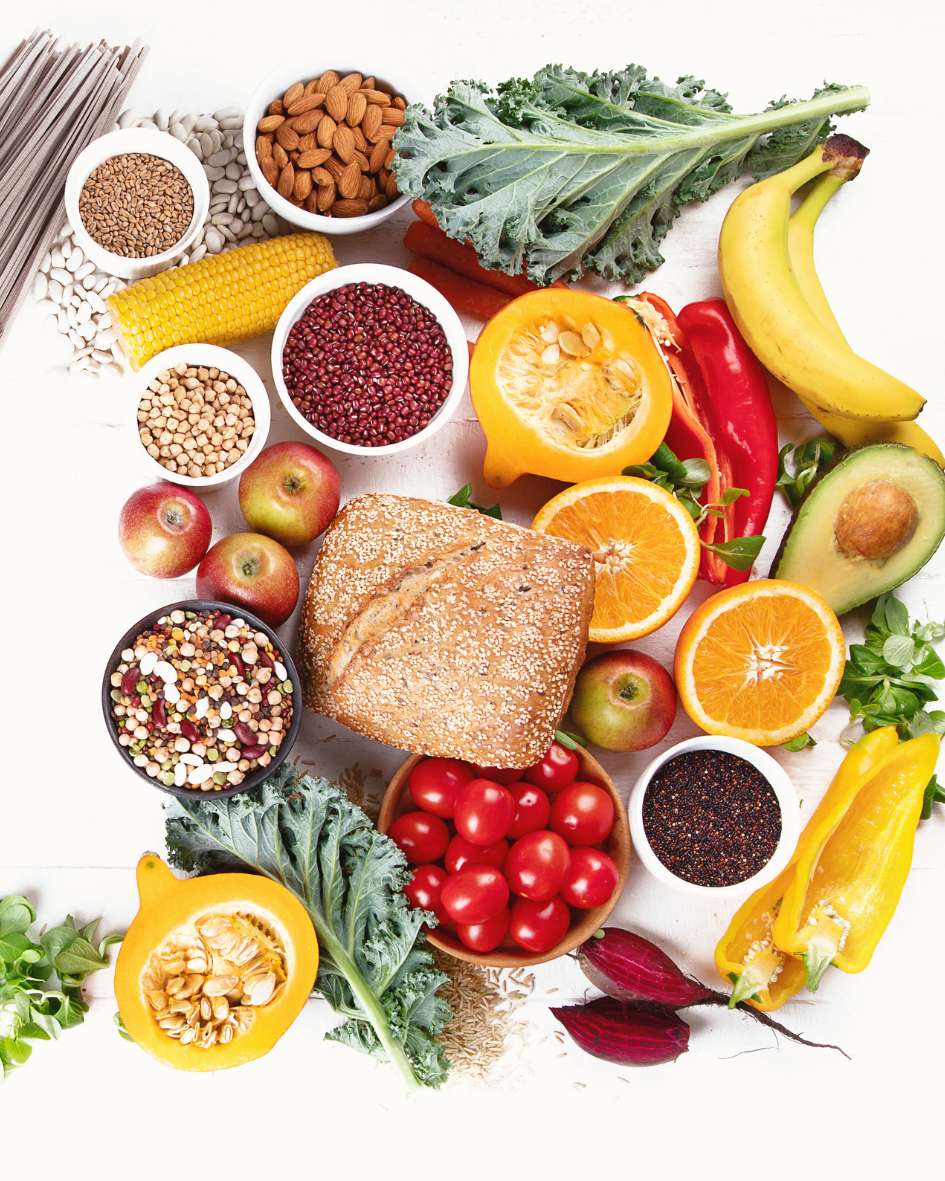
Why a High-Fiber Diet is Good for Your Health
With the current carnivore-craze going around, even fiber isn’t safe anymore. Can you believe that we now have to ‘defend’ fruits and vegetables because some people will literally tell you that plants are trying to kill us? It seems people got bored of saying carbs are the devil (which is also false), so they thought of something else out-there to mislead you (and usually, sell you their supplements).
So, where do we begin..
After analyzing data from more than 388,000 people, a 2011 study (1) found that dietary fiber may reduce the risk of death from cardiovascular, infectious and respiratory diseases. “Making fiber-rich food choices more often may provide significant health benefits.”
A 2019 meta-analysis (2) that included 185 studies and 58 clinical trials with 4635 participants found a 15-50% decrease in all-cause and cardiovascular related mortality when comparing the highest dietary fiber consumers with the lowest consumers.
Additionally, they found fewer cases of coronary heart disease, stroke incidence and mortality, type 2 diabetes, and colorectal cancer. Clinical trials also showed significantly lower body weight, blood pressure, and total cholesterol levels.
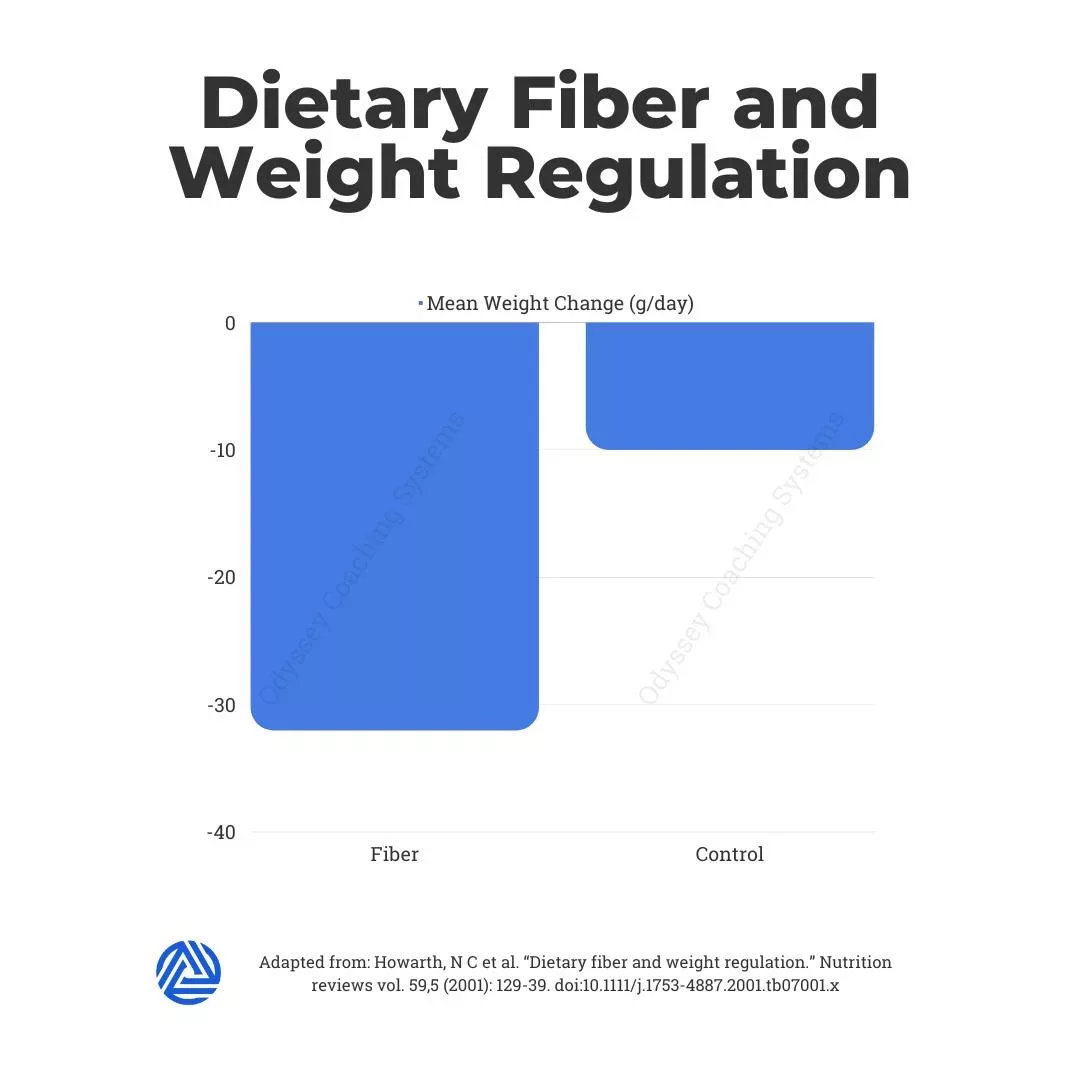
Foods that are high in fiber can also help you lose weight (3,4), as these are typically low in calories and tend to keep you fuller longer.
Soluble fiber (as mentioned earlier) also slows down the absorption of nutrients in your bloodstream, which can help regulate blood sugar levels (5).
Fiber is absolutely crucial for gut health (6) since it promotes normal bowel movements and feeds the good bacteria in your gut. This promotes proper functioning of your body as a whole, but even directly affects your mental and brain health (7).
How to Calculate Your Daily Fiber Goal
To recap the previous section in one sentence: getting enough fiber is really damn important.
However you can also overdo fiber. Eating too much fiber can cause digestive upset, bloating, and discomfort. This can especially become a problem for people with digestive disorders like IBS.
That being said, it’s important to find your sweet spot when it comes to fiber.
What seems to be enough for most people seems to be around 25g for adult women and around 38g for adult men (8).
However you may be better off basing your fiber intake on daily caloric intake, 14g of total fiber per 1,000 calories to be more specific.
For example; a total daily intake of 2400 kcal would mean a daily fiber target of about 33g, which you could see as a 30-35g range.
It’s important to note that when your fiber intake goes up, hydration also needs to go up. We’ll do a hydration article soon, but for now just remember to drink plenty of water when you’re thirsty.
Easy Ways to Up Your Fiber Intake
Now that you’re aware of the many benefits of fiber, and know roughly how much you want to aim for, let’s discuss a few quick and easy ways to increase your fiber intake.
First of all, just like with your macros, you don’t just hit your total intake in one go. Instead, let’s have some fiber with every meal. That way you feel full throughout the day, keep your blood sugar levels in a good spot, and you make hitting your total daily fiber intake super simple.
How? Include at least one serving of fruit and/or vegetables with every meal. You’d be surprised how much you’ll already get from a handful of raspberries with your oats in the morning.
What’s overall food quality like, how much carbohydrate do you eat, and what kinds?
You don’t need to ‘cut the carbs’ in order to lose weight and be healthy! Even foods like bread that are often falsely demonized are totally fine and should, if anything, probably be staples in your overall healthy diet. Have your whole grains and whole grain products!
Also make sure that about 80% (preferably closer to 90% during a cut) of your food choices are minimally processed or whole foods. This includes the foods mentioned above, as well as foods like lentils, sweet potatoes, beans, chickpeas, etc.
And lastly, eat the skins! That goes for your fruits, veggies, potatoes, root vegetables.. The skins of these foods contain lots of fiber and other nutrients.
Soluble and Insoluble Fiber Cheat Sheets
Instead of following fiber targets or ranges, our online nutrition coaching clients mostly focus on the habit of eating the following foods:
- Fruits
- Vegetables
- Whole grains
- Legumes
- Nuts and seeds
Once that’s taken care of and their general food choices are about 80% minimally processed, their fiber intake is often exactly where we want it to be. Rarely do we need to get more specific when it comes to fiber.
*This goes for people who are not dealing with specific digestive issues. Sometimes we do want to get more specific, and depending on symptoms you may even have to address the soluble vs insoluble fiber ratio.
Below you’ll find 12 of each soluble and insoluble fiber sources that can help you increase your overall fiber intake.
Please know that these two lists are by no means ‘special’, that there’s a ton of other options out there, and that these foods contain both soluble and insoluble fiber in different ratios.
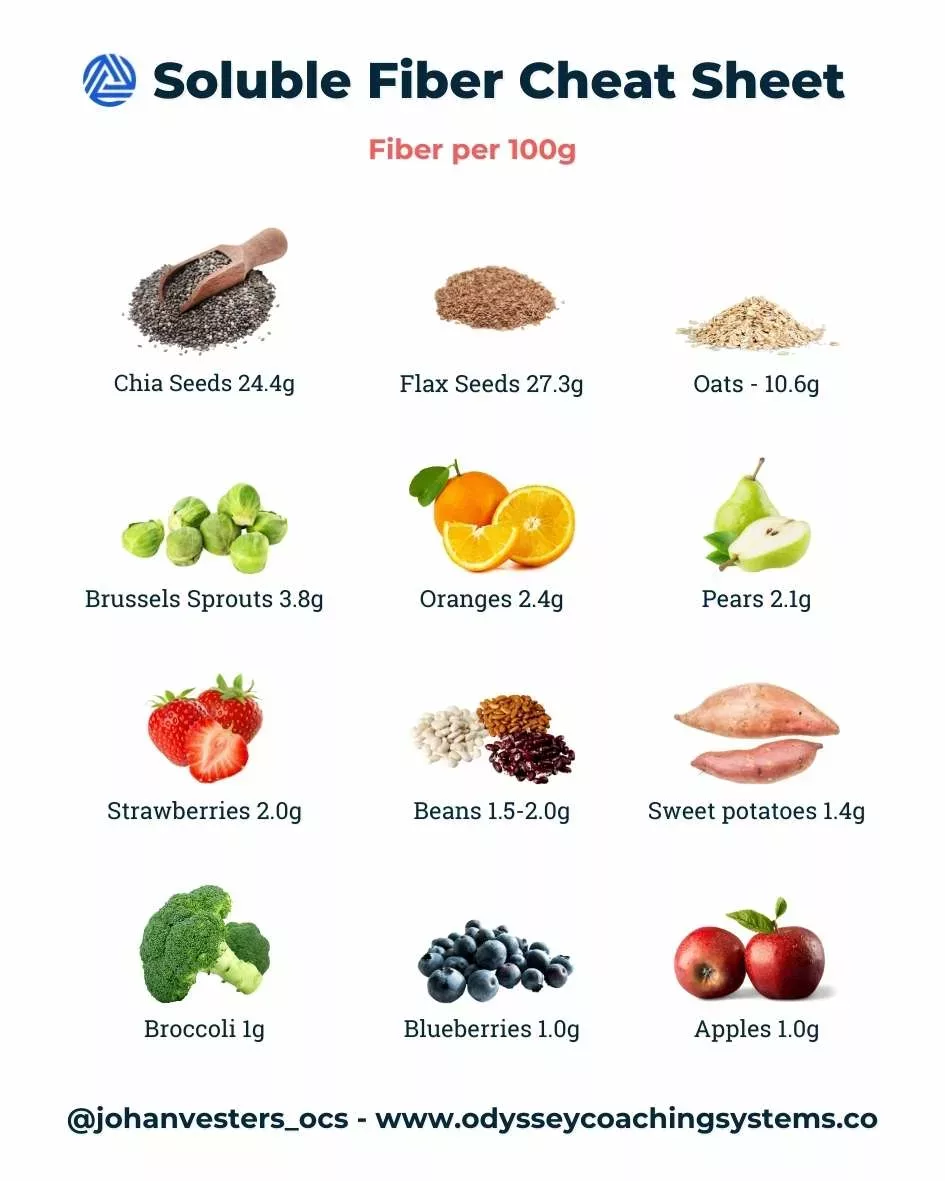
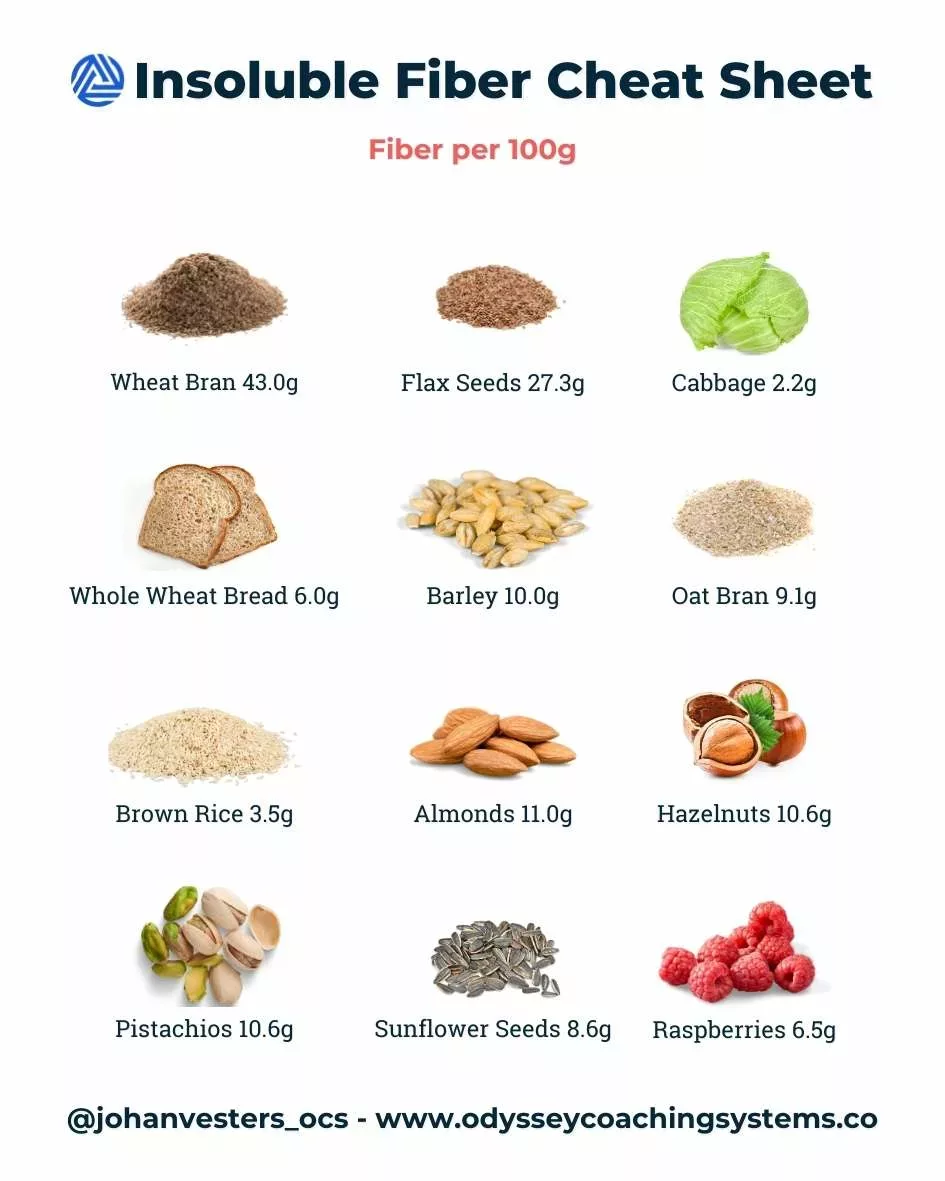
Fiber: The Key to a Long, Healthier Life, and Better Poops
To wrap things up: eat your fiber!
One of the more common issues I see, based on data from a few hundred habit assessment forms that our community members fill out upon entering (click here for free access), is not eating enough fruits and vegetables.
So let’s start there. Do you eat 1-3 servings of fruit, and 2-4 servings of vegetables per day? No? Then consider taking care of those two first. When it comes to fruits and vegetables, there’s really no way around it. We need them (and no, green powders can’t replace them).
Thanks for reading!
I hope you enjoyed this article and that you’ll include lots of fiber in your diet from here on out for the uncountable health benefits that come with it!
- Park, Yikyung et al. “Dietary fiber intake and mortality in the NIH-AARP diet and health study.” Archives of internal medicine vol. 171,12 (2011): 1061-8. doi:10.1001/archinternmed.2011.18
- Reynolds, Andrew et al. “Carbohydrate quality and human health: a series of systematic reviews and meta-analyses.” Lancet (London, England) vol. 393,10170 (2019): 434-445. doi:10.1016/S0140-6736(18)31809-9
- Howarth, N C et al. “Dietary fiber and weight regulation.” Nutrition reviews vol. 59,5 (2001): 129-39. doi:10.1111/j.1753-4887.2001.tb07001.x
- Pal, Sebely et al. “The effect of a fibre supplement compared to a healthy diet on body composition, lipids, glucose, insulin and other metabolic syndrome risk factors in overweight and obese individuals.” The British journal of nutrition vol. 105,1 (2011): 90-100. doi:10.1017/S0007114510003132
- Fujii, Hiroki et al. “Impact of dietary fiber intake on glycemic control, cardiovascular risk factors and chronic kidney disease in Japanese patients with type 2 diabetes mellitus: the Fukuoka Diabetes Registry.” Nutrition journal vol. 12 159. 11 Dec. 2013, doi:10.1186/1475-2891-12-159
- Fu, Jiongxing et al. “Dietary Fiber Intake and Gut Microbiota in Human Health.” Microorganisms vol. 10,12 2507. 18 Dec. 2022, doi:10.3390/microorganisms10122507
- McGuinness, A J et al. “A systematic review of gut microbiota composition in observational studies of major depressive disorder, bipolar disorder and schizophrenia.” Molecular psychiatry vol. 27,4 (2022): 1920-1935. doi:10.1038/s41380-022-01456-3
- Dahl, Wendy J, and Maria L Stewart. “Position of the Academy of Nutrition and Dietetics: Health Implications of Dietary Fiber.” Journal of the Academy of Nutrition and Dietetics vol. 115,11 (2015): 1861-70. doi:10.1016/j.jand.2015.09.003


